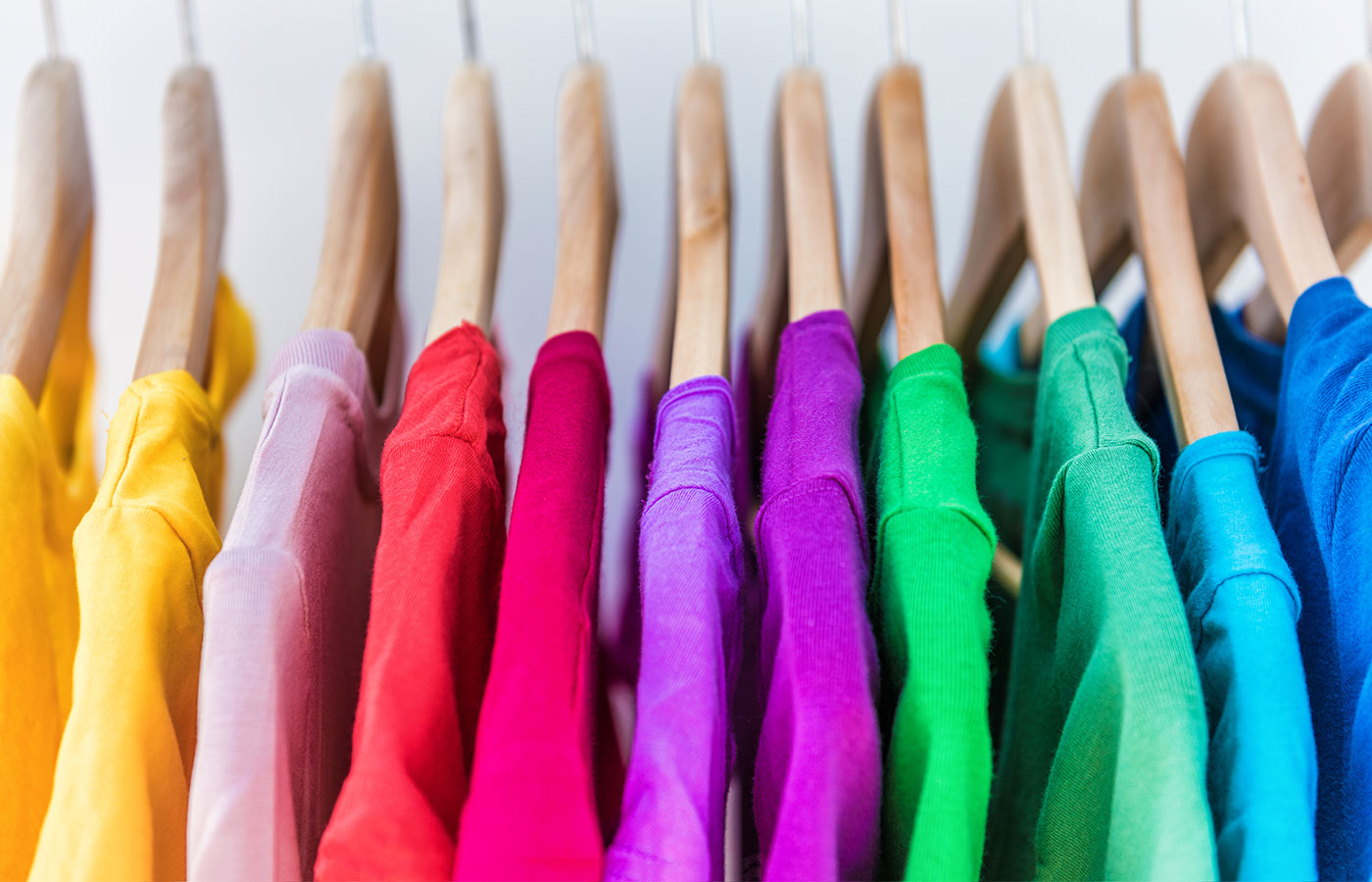Branded Clothing for Travel: Wrinkle-Resistant Fabrics That Perform
Branded Clothing for Travel: Wrinkle-Resistant Fabrics That Perform
Blog Article
Recognizing Apparel: The Significance of Material Options in Your Wardrobe
The option of fabric in garments plays a pivotal function in both aesthetics and capability. Different materials provide differing levels of longevity, comfort, and breathability, directly influencing the wearer's experience. Recognizing these nuances can improve one's closet markedly. Yet, lots of ignore how these choices can impact not simply individual design, yet likewise sustainability. What textile choices could redefine your closet and straighten it with both design and duty?
The Role of Textile in Style and Functionality

Usual Textile Kinds and Their Features
When picking clothing, comprehending the attributes of usual material kinds is important for making educated choices. Cotton, a widely-used all-natural fiber, is recognized for its breathability, versatility, and softness, making it appropriate for informal wear and daily garments. Bed linen, another natural option, boasts outstanding moisture-wicking properties and a distinct structure, ideal for warm climates.Wool, frequently preferred for its warmth and longevity, differs in fineness; merino wool is soft versus the skin, while coarser types are made use of for outerwear. Synthetic fabrics like polyester and nylon use durability and resistance to creases, making them preferred for activewear and traveling garments. Blends, which combine all-natural and synthetic fibers, can enhance functionality while maintaining comfort. By acknowledging these material characteristics, people can select clothing that straightens with their way of living and aesthetic choices.
Breathability and Convenience: Choosing the Right Fabrics for Various Climates
Picking the right materials for various climates can considerably improve convenience and total wearability. Breathable products are essential in warm environments, as they enable air flow and moisture dissipation. Fabrics such as cotton, bed linen, and moisture-wicking synthetics successfully draw sweat away from the body, keeping the wearer cool and dry. Conversely, in colder climates, thicker fabrics like wool or fleece offer insulation while maintaining breathability, guaranteeing heat without overheating.Additionally, the choice of material weight plays a vital role; lightweight materials are more effective for summer season, whereas larger alternatives are suited for winter months wear. Comprehending the one-of-a-kind properties of each material enables people to dress properly for differing weather. Inevitably, selecting breathable and comfy textiles tailored to certain climates can considerably boost everyday convenience and boost the overall experience of using clothes.
Sturdiness and Treatment: Exactly How Fabric Affects Durability of Your Closet
Picking the appropriate products can considerably influence the resilience and care demands of a closet. Fabrics such as cotton and polyester are understood for their durability and ease of maintenance, making them suitable for day-to-day wear. In comparison, delicate products like silk and lace need even more mindful handling and specialized cleansing approaches, which can boost the time and initiative required for care. Branded Clothing.Durability is also affected by the textile's weave and finish; securely woven textiles have a tendency to withstand damage better than freely woven alternatives. Furthermore, synthetic blends often provide improved longevity, combining the ideal image source high qualities of several fibers.Understanding the care instructions for every fabric is vital, as improper cleaning or drying can lead to early wear. Inevitably, choosing sturdy products can result in a longer-lasting closet, decreasing the regularity of substitutes and adding to a much more sustainable style option
The Impact of Fabric on Fit and Silhouette

Lasting Textile Choices: Making Eco-Friendly Choices
The impact of material prolongs past fit and silhouette to include ecological factors, motivating an expanding interest in sustainable material choices. Environment-friendly textiles, such as organic cotton, hemp, and Tencel, are getting grip amongst customers who focus on sustainability in their closets. These materials are usually produced with fewer chemicals and find out water, decreasing their eco-friendly footprint.Additionally, recycled textiles, made from post-consumer waste, provide a cutting-edge service to the textile sector's contamination issue. Brands significantly embrace openness in their sourcing approaches, enabling customers to make educated decisions concerning their purchases.Choosing sustainable textiles not only sustains honest methods however also urges the garment industry to adopt more responsible production approaches. As understanding of ecological concerns rises, individuals are prompted to mirror on the long-lasting influence of their material selections, fostering an activity in the direction of a more ecologically aware and sustainable strategy to fashion.
Elevating Style: How Textile Can Change an Attire
While many may concentrate on shade and cut when choosing an outfit, the selection of material plays a necessary function in boosting design and enhancing total appearance. Different products share unique state of minds and messages; for instance, silk exudes deluxe and sophistication, while jeans offers a casual, loosened up vibe. The texture and drape of a fabric can significantly modify the shape, with structured fabrics supplying a polished look and softer ones producing an extra fluid, kicked back aesthetic.Moreover, the weight of the textile affects wearability throughout periods. Light-weight materials like bed linen and cotton are optimal for summertime, while much heavier products such as wool and velvet give warmth and style in cooler months. Comprehending material homes, such as breathability and stretch, also empowers people to make educated selections that boost convenience without jeopardizing style. Inevitably, the ideal textile can change a clothing from ordinary to phenomenal, making it an essential consideration in any type of closet.
Regularly Asked Inquiries
Exactly how Do I Identify the Material Web Content of My Garments?
To recognize material content, one can examine care tags, conduct shed examinations for fiber recognition, or speak with textile swatches. These techniques assist separate products, guaranteeing informed choices for clothing care and maintenance in day-to-day wear.
Can Fabric Option Affect My Mood or Confidence?
Fabric option can significantly influence an individual's state of mind and self-confidence. Branded Clothing. Website Certain products might evoke feelings of comfort or style, while others can feel uncomplimentary or limiting, inevitably influencing self-perception and psychological well-being throughout the day
What Fabrics Are Best for Delicate Skin?
For people with delicate skin, natural textiles like cotton, bed linen, and bamboo are often advised. These products are breathable, hypoallergenic, and much less most likely to cause irritability, making them suitable options for convenience and skin wellness.
Just how Do I Correctly Clean and Look After Various Fabrics?
To effectively care and clean for various textiles, one must think about each product's particular demands, consisting of temperature level setups, cleaning agents, and drying out approaches, guaranteeing long life and keeping the material's initial top qualities for excellent use.
Are There Particular Fabrics for Athletic or Performance Use?
Athletic or performance wear frequently uses fabrics such as spandex, polyester, and nylon. These products are designed for moisture-wicking, breathability, and adaptability, enhancing movement and convenience throughout exercises while supplying sturdiness and support. Alternatively, in cooler climates, thicker fabrics like wool or fleece provide insulation while retaining breathability, making sure warmth without overheating.Additionally, the selection of material weight plays a crucial role; light-weight textiles are more suitable for summer season, whereas heavier choices are fit for winter wear. In contrast, fragile products like silk and shoelace need even more mindful handling and specialized cleaning approaches, which can enhance the time and effort required for care.Durability is likewise influenced by the textile's weave and surface; snugly woven materials often tend to resist wear and tear far better than loosely woven choices. In comparison, stiff fabrics can limit activity yet provide a traditional, sleek look.Moreover, the thickness and texture of the material can influence the aesthetic understanding of body form. The influence of material expands beyond fit and silhouette to encompass environmental factors, prompting an expanding rate of interest in sustainable textile choices. The structure and drape of a textile can drastically alter the shape, with structured materials giving a refined appearance and softer ones producing an extra fluid, unwinded aesthetic.Moreover, the weight of the material influences wearability across seasons.
Report this page